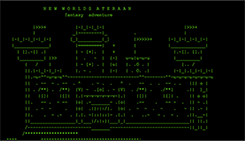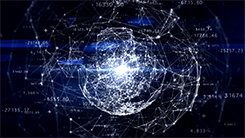
My grandmothers clock

Text-based computer game
Abstract
Cyberspace, a term popularized in the 1984 novel Neuromancer, was used by William Gibson to describe the “consensual hallucination” and interstitial online world that lies between the reality of our world and that of the surreal terrain of dreamscapes. While many attempts have been made to describe this intangible, yet seemingly perceptible space, the digital domain as a metaphor mirrors in many ways our own inadequate understanding of consciousness. Conversely, the physicist Michio Kaku explains that our reality is bounded by hyperspace—a multi-dimensioned space beyond our quotidian 3D existence that runs parallel, or tangential, to us along with the phenomenon of time. Indeed, if space and time (here considered as space-time) are a consolidated whole in the physical sense, perhaps our consciousness, as a structure manifest within this continuum may itself be thought of as a sensorial projection of this amalgam that attempts to observe and make sense, or meaning, of this condition. In truth, what if our need and delight in story-telling is driven by the evolution of our biology, as well as our impulse to locate our place in the universe? This paper will attempt to examine and delimit the narrative confines of space-time as an appeal to, and an endeavor at, uncovering the alterity of storytelling as a function of consciousness. It will visit the realms of the holograph, quantum mechanics, virtual and augmented realities, as well as other scientific and philosophical tracts as a means to investigate and explore the physiology of space and our imperative desire to share stories.
Bibliography
Baum, L. Frank. The Master Key: An Electrical Fairy Tale Founded upon The Mysteries of Electricity and The Optimism of Its Devotees. Indianapolis: The Bowen-Merrill Co., 1901.
Blascovich, Jim & Jeremy Bailenson. Infinite Reality: Avatars, Eternal Life, New Worlds, and The Dawn of The Virtual Revolution. New York: HarperCollins, 2011.
Dredge, Stuart. “Facebook Closes Its $2bn Oculus Rift Acquisition. What next?” in The Guardian Online, 2000-. Article published 22 July 2014.
Gibson, William. Neuromancer. New York: Ace Books, 1984.
Google Cardboard®. Available from 26 June, 2014.
Kaku, Michio. Hyperspace: A Scientific Odyssey through Parallel Universes, Time Warps, and the Tenth Dimension. New York: Anchor Books, 1994.
Luckey, Palmer. “Oculus Rift: Step into the Game.” in Kickstarter, Kickstarter 2009-. Article published 02 August, 2012.
McLuhan, Marshall, & Quentin Fiore. The Medium is the Massage: An Inventory of Effects. Toronto: Penguin Books, 2003.
Microsoft HoloLens®. Available from 21 January, 2015.
Ryan, Mary-Laure. Narrative as Virtual Reality. Baltimore: Johns Hopkins University Press, 2001.
Stewart, William. ARPANET – The First Internet in Living Internet, Living Internet, 2000-. Accessed 27 February 2015.
–––––. Tim Berners-Lee, Robert Cailliau, and the World Wide Web in Living Internet, Living Internet, 2000-. Accessed 27 February 2015.
Tegmark, Max. Our Mathematical Universe: My Quest for the Ultimate Nature of Reality. New York: Alfred A. Knopf, 2014. Kindle Edition.
Keywords
consciousness, narrative, alterity, space-time, utterance, hologram, event

Helical model of the Solar System moving through space

Memetic cloud
